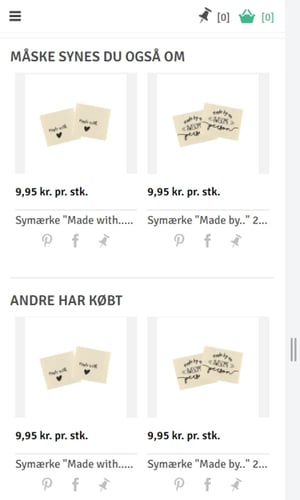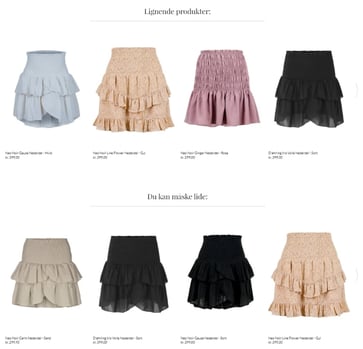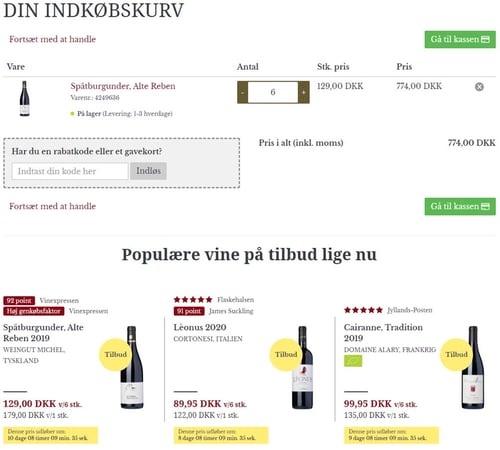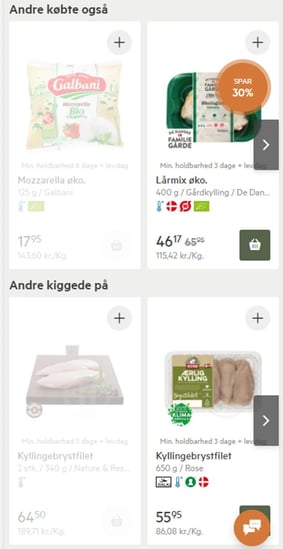1. Avoid duplicates in your recommendation modules
Different recommendation types serve different purposes. Therefore, it is also common to have more than one recommendation module on a page, i.e., a module showing “Others have purchased” for cross-selling and “Others have seen” for upselling.
However, when you have more than one module on the page, ensure that the same product appears only in one of them – and of course, in the module where it is most relevant.
You are wasting screen estate if the same product recommendation is displayed in multiple modules on the same page. This important screen estate could have been used to display another relevant recommendation.
According to The Danish Chamber of Commerce (Dansk Erhverv), 2022 will be the year when more online purchases are made with mobile devices than PCs. Because of the limited mobile screen sizes, product recommendation modules often only display one or two products on these devices, making it even more important not to waste space by displaying the same products.

An example of wasting screen estate from a hobby store. Two recommendation modules on a product details page, both are recommending the same products.

Example of wasting screen estate by displaying the same products twice in two recommendation modules in a clothing store.




